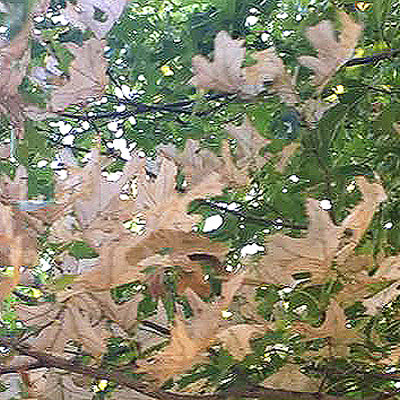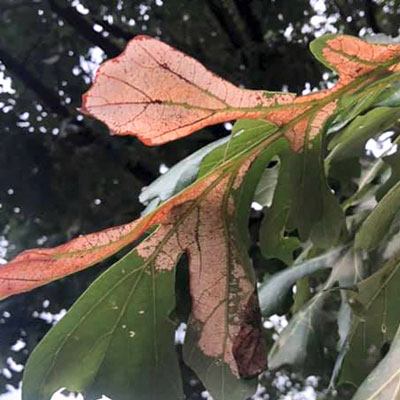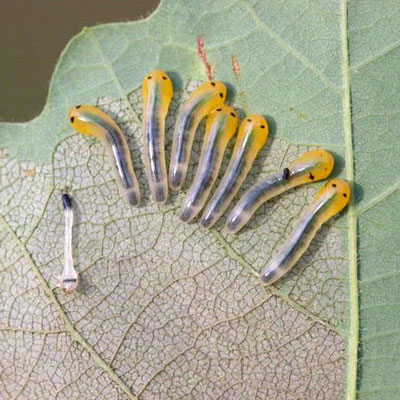Question of the Week: August 5, 2021

“Why are the leaves of my oak tree like parchment paper?”
Sawfly larvae have fed on the bottom sides of these leaves. I get this question frequently from mid-summer through frost, and it can apply to many species of oaks.

I see the damage every summer high up on a bur oak outside my home office window. People ask about their red oaks and live oaks, and I see it every once in a while on Chinquapin oaks.
What you should know about sawflies…
• There are many species. Each carries the name of its host tree in its own name. So, you have “oak sawflies,” “elm sawflies,” etc.
• The adult is a short-lived and almost unnoticeable wasp-like insect that lays her eggs on the leaf surface after using a part of her body to cut a slit into the leaf tissue, hence the name “saw” fly.

• The small larvae are gelatinous and harmless looking at first, but as they go through successive instars (phases), they get larger and their damage becomes more noticeable.

• The larvae feed on the bottoms of the leaves, skeletonizing them and leaving just a network of veins.
• There is usually only one generation per year. The larvae fall to the ground with the dead leaves at the end of the season and emerge the next spring to start the cycle over again.
• By the time the damage has become evident it’s too late for much control. However, if you catch them early enough general garden insecticides (not including B.t.) will usually stop them.
• The good news is that their damage is only temporary. Affected branches will leaf out again the following spring.
Here is a very thorough explanation of sawflies from the University of Wisconsin Master Gardeners program.
